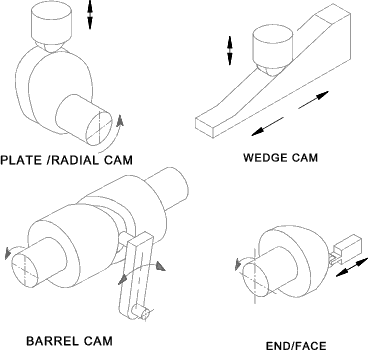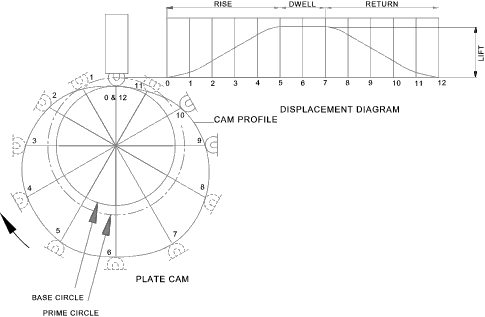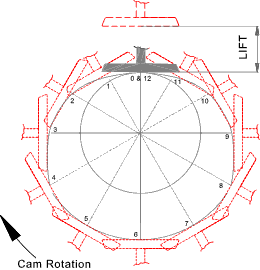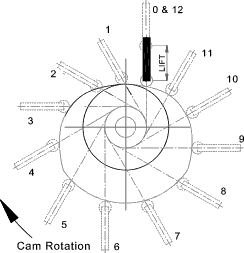| |
Machine_Parts_Index
Cam Design
More details on Cam design are to be found in the links below the table
|
INTRODUCTION
A Cam is a machine component that either rotates or moves back and forth (reciprocates) to create a prescribed motion in a contacting
element known as a follower. The shape of the contacting surface of the cam is determined by the prescribed motion and the
profile of the follower.
Cams are made in a variety of forms,including:
Cams followers can be either reciprocating or pivoting. There are various methods of transferring the motion from the cam to the follower including the following:
The cam follower can be either offset (as shown below) or in line with the cam centre of rotation..
The first stage in designing a cam system is the creation of a displacement diagram... A typical plate cam with an in-line roller follower is shown below with a displacement diagram. This figure shows the following characteristic features.
The diagram below shows a plate cam with a flat face follower showing twelve follower positions..
The diagram below shows a plate cam with an offset roller follower showing twelve follower positions..
The diagram below shows a plate cam with an pivoting follower showing twelve follower positions..
The displacement diagram is a plot of the cam displacement vs the cam angle e.g. y = f(θ) f'(θ) = dy /dθ.. This is a plot of the slope of the displacement graph
and thus the rate of movement of the follower. High values of f'(θ) result in
very steep cam slopes with a risk the the follower will jam f''(θ) = d2y /dθ2.. This is related to the curvature of the cam. If f''(θ) becomes very large the curvature of the cam approaches zero ( a point). This is highly unsatisfactory as it results in very high contact stresses and consequent wear... To be continued |
Links to Cam Design
|
|
Machine_Parts_Index





